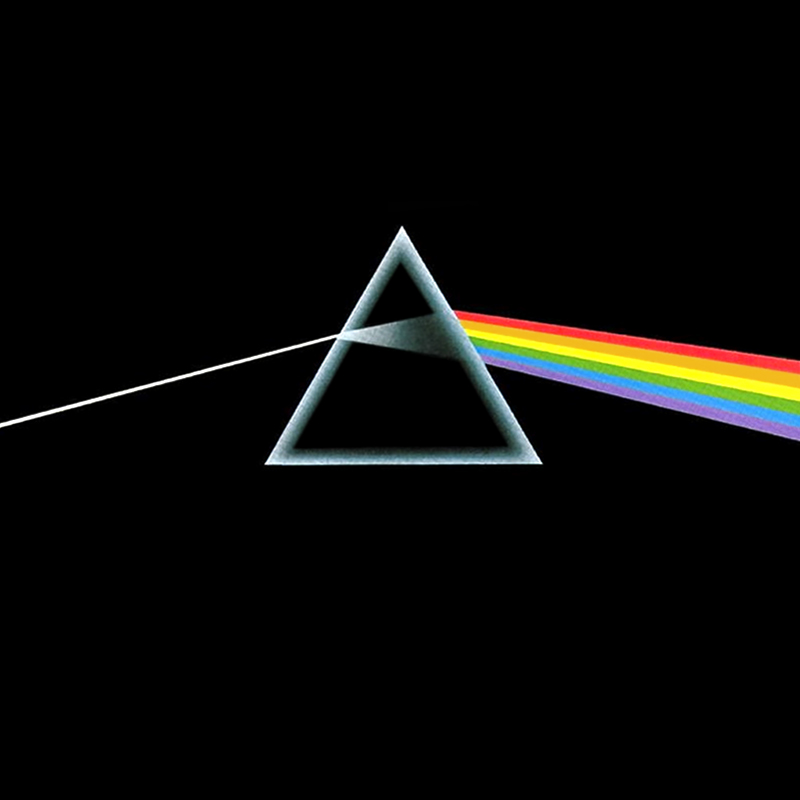 |
| "Ground control to Major Tom..." Wait, no. Wrong thing. |
No matter how magical classic albums throughout popular music history may seem, none were made overnight.
Concept albums align even more to this trend. Not only does the band have to make a cohesive set of quality songs, but it also has to arrange them in a way that displays a unified theme or story. That task can take months or even years to complete. The most successful, and likely the greatest, concept album ever made is Pink Floyd’s “The Dark Side of the Moon,” which is celebrating its 40th anniversary March 1.
Perhaps the nearly universal appeal of “Dark Side” has something to do with its universal themes of conflict, greed, the passage of time, violence, madness, death and mental illness. The album is able to touch on all of humanity’s problems and fears without getting bogged down in details or overstepping its boundaries. The way each track on the album rolls into the next, without the typical two-second pause between songs, contributes to its compelling nature. Every track begs to be played in its correct order, and when this order is disrupted, the result is confusion. Yet there are many more reasons besides novel organization for why “Dark Side” is legendary. The surprising thing is how Pink Floyd got there.
It’s very possible that “Dark Side” or a similar album that might have been a landmark for progressive rock would never have been made by Pink Floyd if the band had been able to maintain its original lineup. The band formed in 1965 with main creative force Syd Barrett on vocals and guitar, Roger Waters on bass, Nick Mason on drums and Richard Wright on keyboards. However, after releasing the classic psychedelic rock album “The Piper at the Gates of Dawn” in August 1967, Barrett suffered a nervous breakdown, and his mental health steadily deteriorated to the point where Pink Floyd had to cancel several tour dates. Guitarist David Gilmour was added in December to cover for Barrett during performances, but Barrett agreed to leave the band a few months later when it became clear that the arrangement was not working.
For the next five years, Pink Floyd was a band in transition. Waters, Gilmour and Wright were suddenly required to fill the huge songwriting void that Barrett had left. Despite this setback, they released six more albums (two of which were soundtracks) that are all critically respected today. They also found themselves delving into highly experimental, then progressive, rock. By 1972 the band had left the sound of “Piper” completely behind with its previous album “Meddle.” One could argue that now was the right time to become very philosophical, not just about Barrett’s deterioration but the arduous journey that had been Pink Floyd. That is exactly what the band resolved to do, performing a version of “Dark Side” (with the subtitle “A Piece for Assorted Lunatics”) live as early as February of that year. It took extensive touring through 1972 and two separate sessions at Abbey Road Studios to get the meticulously crafted album we have today.
A big portion of the greatness of “Dark Side” is the instrumentation, which is splattered with overtures, reprises, augmented chords, time signature changes, soaring solos, and chord changes that are still beautiful even after they are familiar. The whole album possesses a certain gravity and echoing depth, musically as well as lyrically, and though it is generally classified as progressive rock, it borrows elements from the standard 12-bar blues and jazz. Two highlights are Clare Torry’s unhinged belting in “Great Gig in the Sky,” which greatly accentuates the song’s theme of the fear of death, and Wright’s omnipresent synths in “Any Colour You Like,” which are astoundingly fresh 40 years later.
Though great musicality is apparent, Pink Floyd’s experimental history also shows itself, adding unconventional sounds to relatively straightforward rock. The audio samples interspersed throughout the album are recordings of friends and associates who were asked a series of questions, ranging from the everyday “What is your favorite color?” to the more abstract and philosophical “When was the last time you were violent?” followed immediately by “Were you in the right?” Other sounds, such as the cash registers in “Money,” the ringing clocks in “Time” and the kick-drum heartbeat that starts and ends the album provided some of its most iconic moments.
All of these elements add to the emotion of the record and make it downright cathartic and thought provoking. The barely heard line in “Eclipse” — “There is no dark side in the moon, really. … As a matter of fact, it’s all dark” — raises the most questions. All dark or not, Pink Floyd’s musical conception of humanity is a tremendous achievement.
John Guest and Nora Goldberg's article was originally published in Drexel University's independent newspaper The Triangle on March 1st, 2013
No comments:
Post a Comment